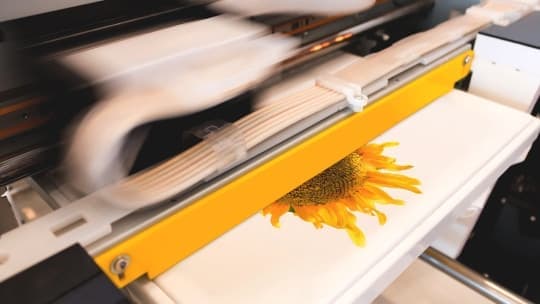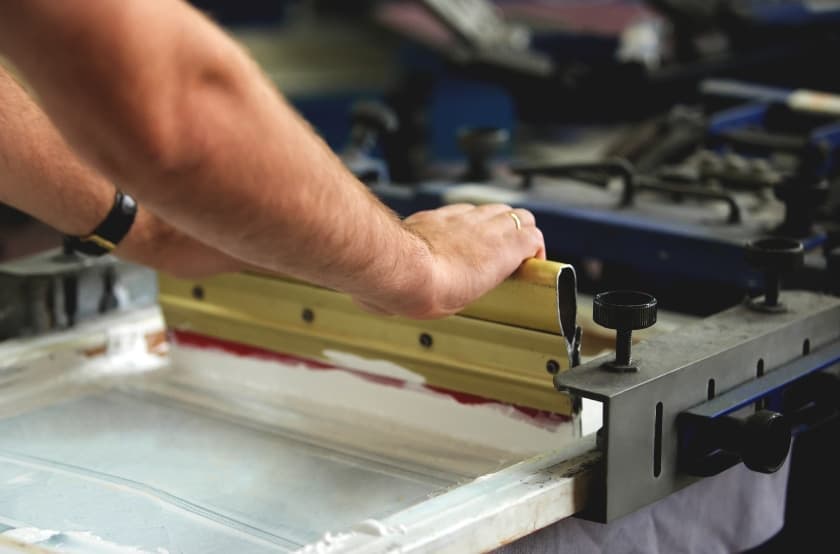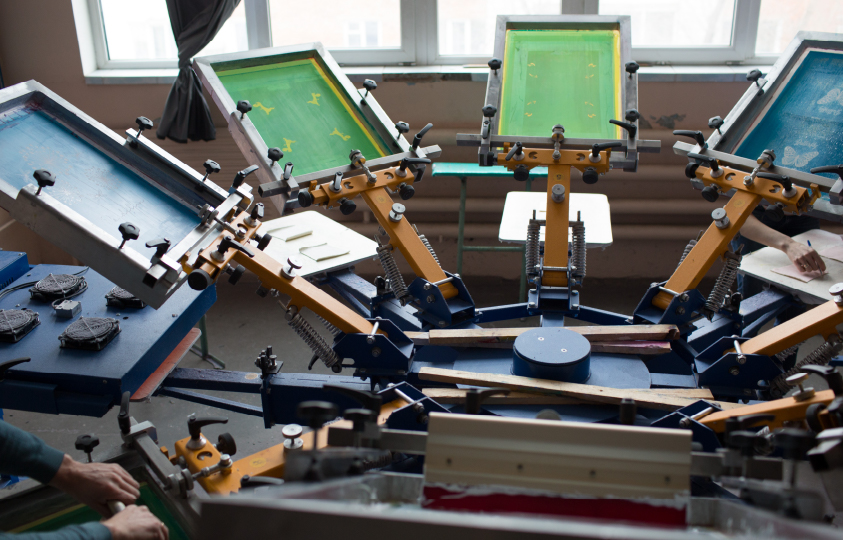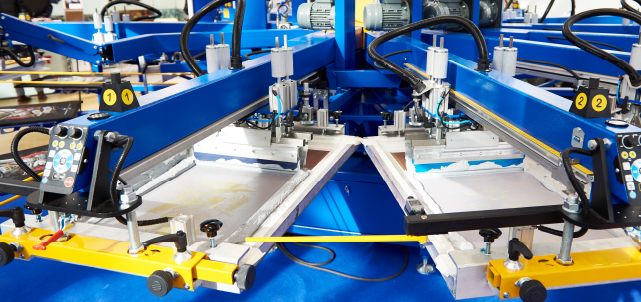When it comes to t-shirt printing, one of the most commonly asked questions is, “What is the difference between digital vs screen printing?” For those who are new to this industry, it might seem like a lot to digest. We are going to take the time now to break down the differences between both methods so that you can better understand how to successfully establish your printing business.

Process & benefits
Screen printing is a method of printing that gives you your artwork laid down layer-by-layer with a solid base underneath. Each separated color is exposed to individual screens. Subsequently, colors are applied one by one to the shirt, which is then dried and cured to complete your final product. This method is capable of printing large amounts of garments much quicker and more economically than digital printing. Screen printing can bring to life designs that have minimal detail or amount of colors within the artwork. While usable colors for this method are limited, the layers of ink can be applied in a slightly thicker manner with an enhanced appearance. So, if you are looking to print a large volume of company, branded or team shirts, screen printing may be the best method for you.
Digital printing (DTG) is a different approach to printing t-shirts. Artwork is printed directly onto the garment after the article has been pretreated. The pretreatment and printed shirts will require heat curing. This adds time to the process, although there are alternative solutions that are helpful. This method of printing can give intricate works of art the attention and detail they need to come out looking clean and refined with no color limit. Artwork preparation is easier to prepare, and set-up times are non-existent, allowing you to print one-off customer designs. For its efficiency and user-friendly set-up, this method is ideal for a smaller batch of garment orders.
Affordability
The amount you should expect to pay will rely on a few things, including the number of garments that you need printed, how many colors are required, and the design itself. How affordable each printing method is will depend on what you’re printing, and it’s important to take all factors into consideration when deciding between DTG vs. screen printing.
Quantity – How many do you need? It is always better to go slightly over than under when you are placing an order for a print job. You would much rather have a few extra just in case than have to go back and print a few more items. You could end up wasting crucial time and money. So be sure you have an accurate estimate of how many items you will need printed. Keep in mind that large orders can often be made cheaper than smaller ones. This is particularly the case with screen printing. If you do have a large order, screen printing will likely be the most cost-effective printing choice, as DTG printing isn’t great for large batches.
Colors required – How many colors do you need? While this might seem like an extremely specific detail, it makes a huge difference in price and the equipment you will want to utilize when starting your print job. Using fewer colors can be more cost-efficient as you won’t be using as much time to set up and print your job, not to mention the amount of ink to create your print. Screen printing will not be your most cost-effective option if you are printing in multiple colors. If you can stick to a select few, screen printing could be your go-to option. This, however, is still dictated every bit as much by the volume of shirts to be printed as by the number of colors. Using specialty separation software, or simply knowing how to separate and set-up process or simulated-process colors, can help reduce the number of inks needed and still render high-quality, full-color images. If you are set on recreating complex details, digital printing will be the ideal printing method to make sure you get the sharp image you want, but only if the number of shirts required is low.
Design – The size of your design will also add to your cost, as larger images take longer to print and require additional ink needed for the entire print job. This is true of either method.
You will also have to consider the upfront investment and what is feasible for you and your business. DTG printing has a minimal upfront investment while screen printing will require a large upfront investment.

Current trends
Lately, the need for high-quality shirt designs has made for a superior print. By using better garment material, you help ensure the quality of your print as well as the longevity. With a DTG method of printing, you can feel free to use 100% quality cotton to make your design stand out and have a photographic look and feel, keeping in mind you will need to pretreat your shirts for the best results and print a white underlayer for dark shirts. With screen printing, you have a broader selection of materials available to you, making it the more flexible solution.
While screen printing has been around for a long time, digital printing offers newer technology, adding a new dimension to the world of garment printing. Yet neither one of these should be considered the only way. You need to determine what you wish to accomplish and what you need in order to accomplish that goal. Regardless, each method is a business model in and of itself. When it comes to digital vs screen printing, be sure you are paying attention to all of the key elements listed above so that you can run your own profitable print business. Stay in the loop and keep checking back to our blog to get the latest in industry updates and trends.





